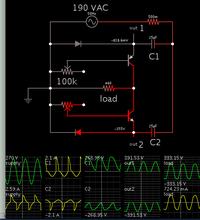Almas Sahar
Newbie level 3
Dear
The usual voltage stabilizers that we use in our homes are either based on transformers and relays, or Servo motors and work on the concept of Tap Changing, however, I came to know about new techniques that use IGBTs and PWM, however I am not getting the clear picture of this.
Can someone please tell me any new advances in Stabilizers that make stabilizers cost effective, efficient and small size.
It would be better if it do not use conventional iron core bulky transformer but instead use ferrite core transformer.
Thanks
The usual voltage stabilizers that we use in our homes are either based on transformers and relays, or Servo motors and work on the concept of Tap Changing, however, I came to know about new techniques that use IGBTs and PWM, however I am not getting the clear picture of this.
Can someone please tell me any new advances in Stabilizers that make stabilizers cost effective, efficient and small size.
It would be better if it do not use conventional iron core bulky transformer but instead use ferrite core transformer.
Thanks
